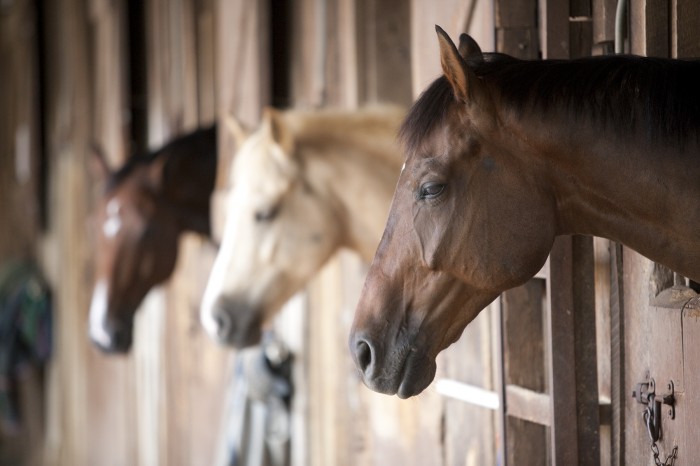
The effect of housing on the welfare of young horses
For this study a total of 36 two-years old Dutch Warmblood horses, 18 geldings and 18 mares were used. The horses were divided in two treatment groups: 18 horses were housed individually in boxes and 18 horses were housed in 9 pairs with each pair having access to an area of 48m2.
The behaviour of the horses was observed and the horses were exposed to a corticotrophin releasing factor (CRF) challenge test. At the end of the experiment the horses were tested for emotionality during a Novel Object test.
Results showed that the horses housed in pairs spent significantly more time eating. In contrast, individually housed horses spent significantly more time standing vigilantly, sleeping or dozing. Furthermore, the individually housed horses displayed significantly more stress-related behaviours. At the end of the 12-week experiment 67% of the individual stabled horses had developed a stereotypy. None of the horses in the pair housing developed a stereotypy. Sudden isolated stabling of young horses is, therefore, experienced as stressful and results in stereotypies.
The cortisol response and ACTH response on the CRF challenge test were lower for horses stabled individually. In the Novel Object no difference in reactivity was found between the two treatment groups. However, significant relations between the responses of horses in the Novel Object test and in the stable were found suggesting that horses exhibit consistent behavioural traits across different contexts.
> From: Visser et al., Appl. Anim. Behav. Sci. 114 (2008) 521-533 (2017) 521-533(Epub ahead of print). All rights reserved to Elsevier B.V.. Click here for the online summary.


